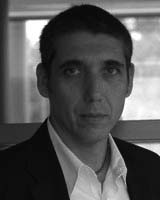

Prof. Jose Torero is the new Chair of the Fire & Safety Working Group at the Council on Tall Buildings and Urban Habitat (CTBUH).
The CTBUH, founded in 1969, is an international not-for-profit organization supported by architecture, engineering, planning, development and construction professionals, designed to facilitate exchanges among those involved in all aspects of the planning, design, construction and operation of tall buildings.
The role of the CTBUH Fire & Safety Working Group is to provide a genuine international cross discipline working party that can review current research and offer guidance and support from the basis of supporting tall building design for the sake of developers, tall building designers and local code enforcement agencies. This is essential under the resurgence of interest in Fire and Life Safety of Tall Buildings following the events of 9/11, but also stimulated by the current vogue in building design to reach greater heights than ever before with schemes of increasing complexity and architectural merit.

The CTBUH profile of Prof Torero says:
José Torero is currently BRE Trust/RAEng Professor of Fire Safety Engineering, Head of the Institute for Infrastructure and Environment and Director of the BRE Centre for Fire Safety Engineering at the University of Edinburgh. José has authored a book in computational methods for fire safety engineering, more than 20 book chapters and more than 300 technical publications in a broad array of subjects associated to fire safety engineering. He has conducted work on prescriptive and performance based design, forensic fire investigation and product development, conducted detailed structural response to fire, fire resistance evaluation, material selection, life safety analysis, smoke evacuation, detection and alarm design as well as standard and advanced fire suppression systems. José was elected fellow of the Royal Society of Edinburgh and awarded the Arthur B. Guise Medal by the Society of Fire Protection Engineers (USA) in 2008, both in recognition of eminent achievement in advancing the Science of Fire Protection. He has participated in landmark projects like the NASA Space Shuttle Hangars in Florida, the 80 storey Heron Tower in London, the Clyde and Dartford Tunnel fire safety design, the investigations of the WTC 1, 2 and 7 collapses, the Madrid Windsor Tower Fire, the Texas City and Buncefield Explosions as well as the Ycua Bolanos supermarket fire.
















